As the thermometer flirts with the 40-degree mark, the craving for something refreshing mounts. And nothing epitomises refreshing better than a chilled gazpacho which, without a doubt, reigns supreme in the hot Spanish summer. But the culinary adventure doesn't stop at gazpacho, as Spanish gastronomy offers a rich variety of dishes perfect for the summer months.
Summer in Spain brings more than just scorching heat; it influences the culinary landscape significantly. People often find themselves saying, "It's so hot I'm not even hungry." Yet, this is the time when the hydrating bounty of nature, including juicy fruits and vegetables, finds prominence in daily meals. From cool soups to salads bursting with freshness, Spanish summer foods are a delightful answer to the warm weather. Let's take a look at some Spanish summer classics (recipes can be found via the links or at the bottom of this article):
1. Gazpacho Andaluz
Starting with the undisputed king, the Gazpacho Andaluz is simple yet sublime. Made from ripe tomatoes, green peppers, cucumbers, garlic, onions, bread crumbs, olive oil, and a splash of vinegar, this chilled soup is often garnished with hard-boiled eggs and crispy ham bits.
2. Esqueixada Catalana
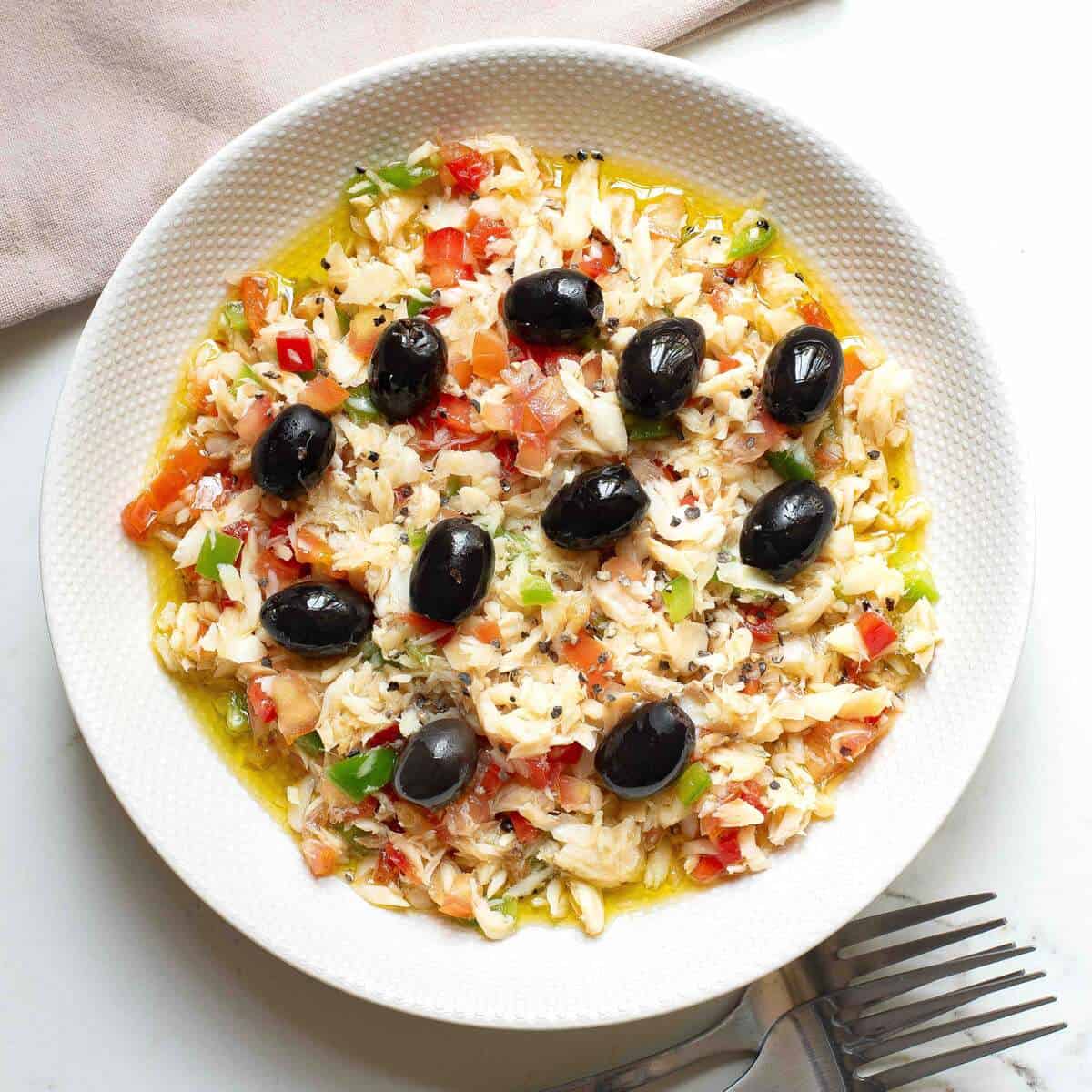
The Esqueixada Catalana from Catalonia is a testament to the versatility of cod. This dish features shredded salt cod tossed with tomatoes, onions, and black olives, dressed in olive oil and vinegar—providing a light yet protein-rich meal ideal for hot days.
3. Zorongollo Extremeño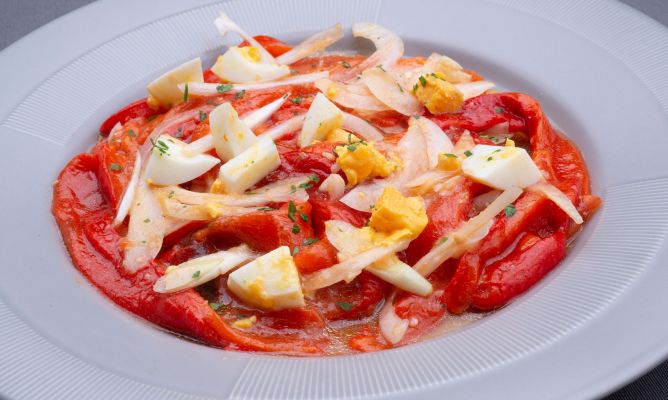
Venturing into Extremadura, the Zorongollo offers a delightful combination of roasted peppers and tomatoes, dressed in their own juices along with olive oil and salt. This salad is a common sight not just in Extremadura, but also in neighbouring regions, often accompanying main courses of meat or fish.
4. Pulpo a la Gallega
From Galicia comes the famed Pulpo a la Gallega, where whole octopuses are boiled to tenderness, seasoned with paprika, and served on a bed of potatoes. A generous drizzle of olive oil completes this dish that's as hearty as it is flavourful.
5. Ajoblanco
Jumping back to Andalusia and Extremadura, Ajoblanco is a surprising blend of raw almonds and garlic, bread, olive oil, and vinegar, creating a cold soup that's traditionally served with grapes or melon—a refreshing blend of flavours and textures.
6. Salmorejo
Thicker and creamier than its cousin gazpacho, Salmorejo is another cold soup from Andalusia that's made from tomatoes, bread, garlic, and significantly more olive oil, offering a richer taste and smoother consistency.
7. Pisto Manchego
The versatility of Pisto Manchego, akin to ratatouille, allows it to be enjoyed either hot or cold. Made primarily from tomatoes, peppers, and courgettes (or sometimes aubergines), it's a staple at the Fiesta del Pimiento in Villanueva de los Infantes.
8. Arroz Negro
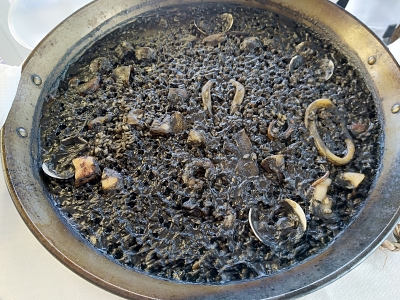
The Valencian Arroz Negro, made with squid ink, provides all the flavours of the sea without the heaviness often associated with seafood dishes. Squid, cuttlefish and prawns are common additions, enhancing the marine flavour profile.
9. Chipirones Afogaos
From Asturias, the Chipirones Afogaos are small squids cooked in a sauce typically made from white wine or cider, embodying the simplicity and richness of northern Spanish seafood.
10. Ensalada Aragonesa
In Aragon, the Ensalada Aragonesa is a treasure trove of textures and flavours, featuring potatoes, onion, greens, tomatoes, desalted cod flakes, and boiled eggs, enriched with a variety of beans and olives, making it not only refreshing but also nutritively complete.
11. Papas Aliñas
Papas Aliñas, which is effectively 'Spanish Potato Salad', is a delightful dish originating from the southern region of Spain, Andalusia. Considered a classic Spanish tapas, this easy-to-prepare ensemble boasts Mediterranean flavours that are hard to resist.
12. Ensalada de Bacalao y Naranja
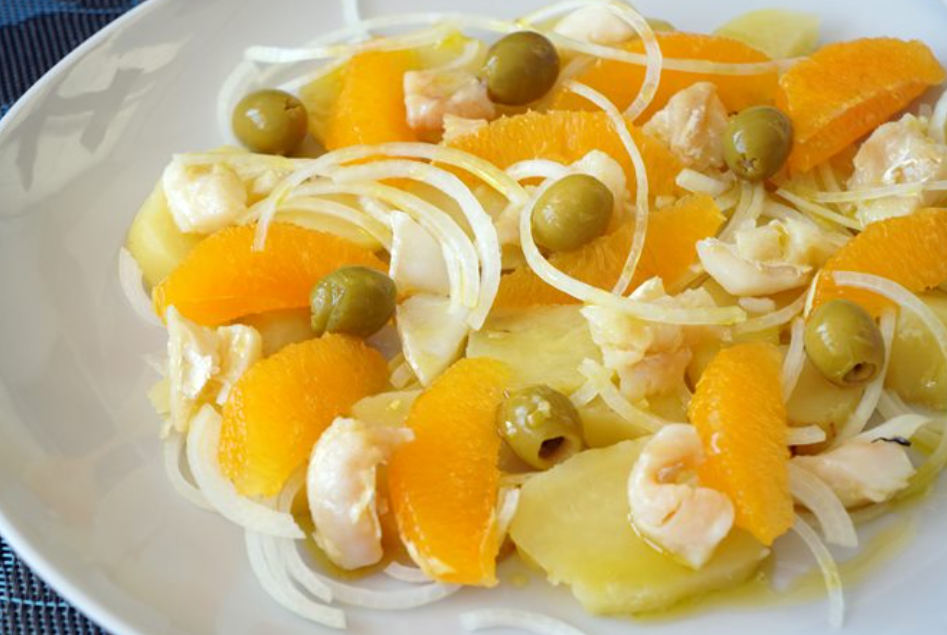
The Ensalada de Bacalao y Naranja from Málaga showcases the delightful pairing of salty cod and sweet, acidic oranges, further enhanced by potatoes, providing a refreshing and hearty dish.
13. Ensalada de Garbanzos
Incorporating legumes into a summer diet is made easy with dishes like the Ensalada de Garbanzos, where chickpeas are mixed with tuna belly, tomatoes, and high-quality olive oil, offering a light yet satisfying meal.
14. Escalivada
This Catalan dish of roasted vegetables such as aubergine, peppers, and onion, dressed in garlic and olive oil, can serve as a delicious starter or a side to meats and fish.
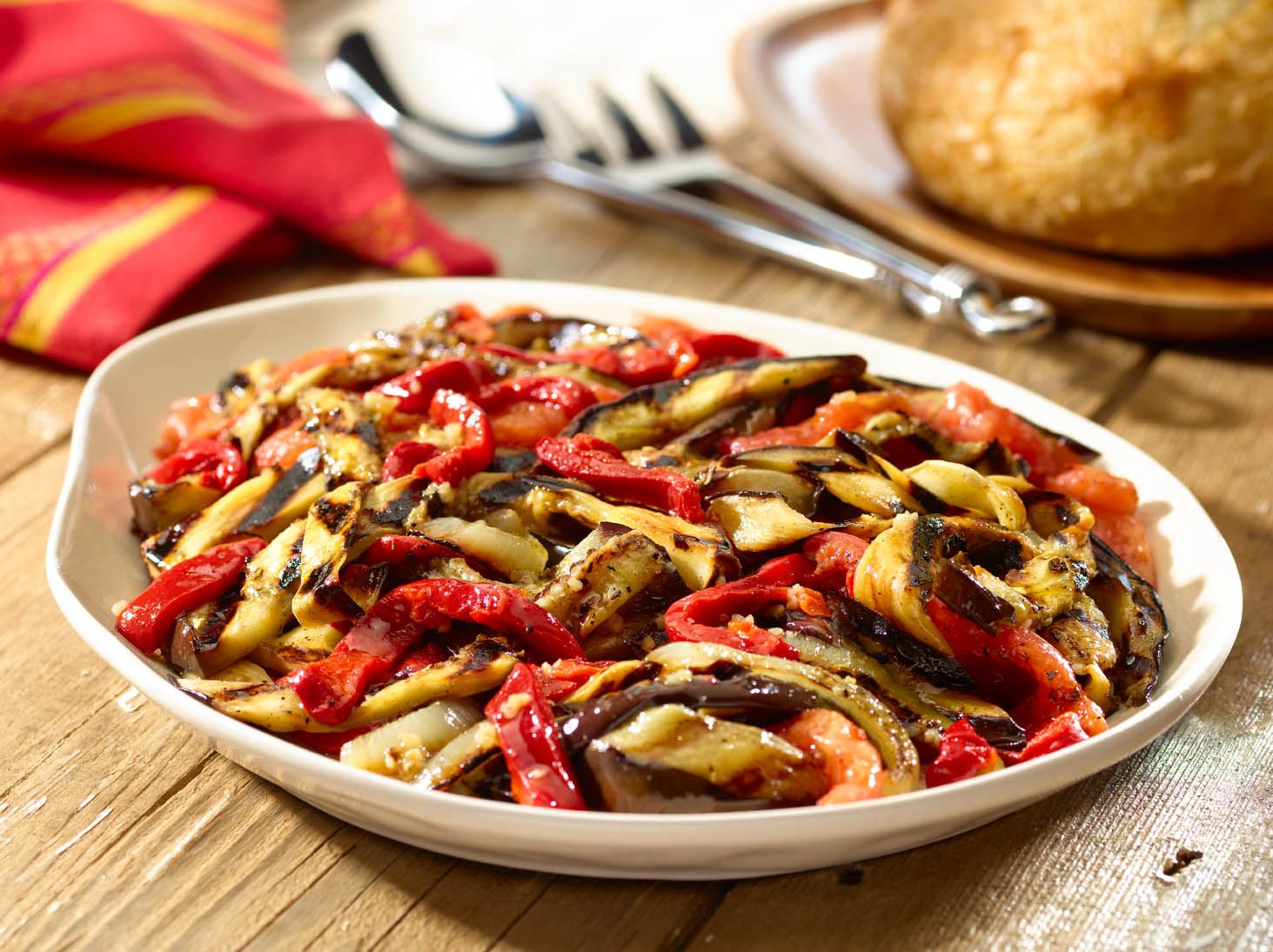
15. Moje Murciano
From Murcia, the Moje Murciano utilises canned tomatoes with tuna, eggs, and black olives, creating a simple yet flavourful dish that can be enjoyed year-round.
16. Pipirrana
A refreshing salad from Jaén and La Mancha region, the Pipirrana is a mix of tomato, green pepper, boiled egg, tuna, and sometimes onion, dressed in garlic and olive oil, perfect as a side or a light main dish.
17. Salpicón
Primarily a seafood salad, Salpicón combines the best of the garden and the sea, showcasing the Mediterranean's bounty in a refreshing and appetising way.
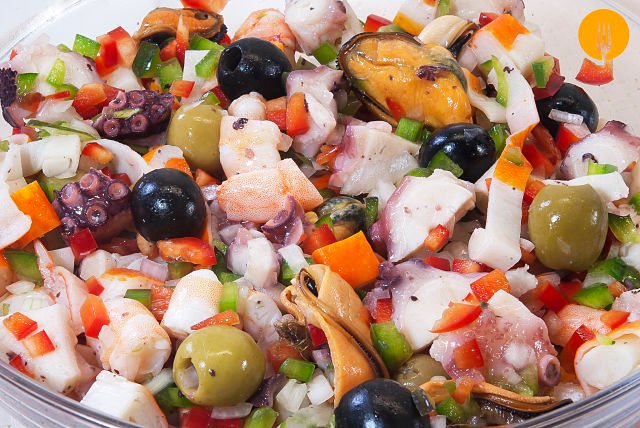
Each dish not only offers relief from the summer heat but also provides a glimpse into the regional diversities of Spain. These recipes, steeped in tradition and bursting with flavours, uphold the heritage and celebrate the seasonal produce of the regions, making Spanish summers truly unforgettable. Whether enjoyed at a local restaurant or prepared at home, these dishes are sure to bring refreshment to any summer day. If you fancy making them at home here are the recipes that weren't linked to other articles:
Recipes:
2. Esqueixada Catalana
Ingredients:
300g salt cod, desalted and shredded
2 large tomatoes, chopped
1 medium onion, thinly sliced
½ cup black olives, sliced
¼ cup extra virgin olive oil
2 tbsp white wine vinegar
Salt and pepper to taste
Instructions:
- In a bowl, combine the desalted cod, tomatoes, onion, and olives.
- Drizzle with olive oil and vinegar, then season with salt and pepper.
- Mix well and refrigerate for an hour before serving to allow flavours to meld.
3. Zorongollo Extremeño
Ingredients:
4 red bell peppers
2 ripe tomatoes
2 cloves garlic, minced
3 tbsp olive oil
Salt to taste
Instructions:
- Roast the peppers until charred, then peel and seed them.
- Slice the roasted peppers and place in a bowl.
- Add chopped tomatoes and minced garlic to the bowl.
- Season with salt and drizzle with olive oil.
- Refrigerate before serving to enhance the flavours.
8. Arroz Negro
Ingredients:
400g paella rice
1 litre fish stock
2 squid, cleaned and cut into pieces
4 garlic cloves, minced
1 onion, chopped
250g ripe tomatoes, grated
Squid ink sachets
Olive oil
Salt to taste
Lemon wedges and Allioli for serving
Instructions:
- Sauté the garlic and onion in olive oil until softened.
- Add the squid and cook for a few minutes.
- Stir in the rice, coating it well with the cooking mixture.
- Add the grated tomatoes and squid ink, mixing well.
- Pour in the fish stock, season with salt, and cook until the rice is tender and has absorbed the liquid.
- Serve with lemon wedges and Allioli (garlic mayonnaise)
9. Chipirones Afogaos
Ingredients:
500g small squid, cleaned
2 onions, finely sliced
3 cloves garlic, minced
200ml white wine or cider
Olive oil
Salt and pepper to taste
Parsley, chopped (for garnish)
Instructions:
- In a pan, heat olive oil and sauté onions and garlic until tender.
- Add the squid and sauté for a few more minutes.
- Pour in the white wine or cider, reduce the heat, and simmer until the squid is tender and the sauce has thickened.
- Season with salt and pepper.
- Garnish with chopped parsley before serving.
10. Ensalada Aragonesa
Ingredients:
2 potatoes, boiled and cubed
1 onion, finely chopped
Mixed greens (lettuce, rocket, etc.)
2 tomatoes, chopped
100g desalted cod flakes
2 hard-boiled eggs, quartered
Olives and white beans (optional)
Olive oil, vinegar, salt for dressing
Instructions:
- In a large salad bowl, combine the potatoes, onion, mixed greens, tomatoes, cod, and eggs.
- If using, add olives and white beans to the mix.
- Dress with olive oil, vinegar, and salt to taste.
- Toss the salad well and serve chilled.
12. Ensalada de Bacalao y Naranja
Ingredients:
250g salt cod, soaked and flaked
2 oranges, segmented
2 potatoes, boiled and sliced
1 small onion, thinly sliced
Olive oil, salt, and black pepper to dress
Fresh parsley to garnish
Instructions:
- Arrange the potato slices as a base on a serving plate.
- Top with the salt cod flakes, orange segments, and onion slices.
- Drizzle generously with olive oil and season with salt and pepper.
- Garnish with fresh parsley before serving.
13. Ensalada de Garbanzos
Ingredients:
400g canned chickpeas, rinsed and drained
200g tuna belly (or canned tuna in oil), drained
1 tomato, chopped
1 onion, finely chopped
1 green bell pepper, chopped
Olive oil, vinegar, salt, and pepper for dressing
Instructions:
- In a salad bowl, combine all the ingredients.
- Dress with olive oil, vinegar, salt, and pepper to taste.
- Refrigerate for at least an hour before serving to allow flavors to meld.
14. Escalivada
Ingredients:
2 aubergines (eggplants)
2 red bell peppers
2 yellow bell peppers
1 large onion
2 cloves of garlic, finely chopped
Extra virgin olive oil
Salt to taste
Freshly ground black pepper to taste
Optional: a few sprigs of fresh thyme or rosemary
Instructions:
- Preheat your oven to 200°C (390°F).
- Wash the aubergines, peppers, and onion
- Place the vegetables whole on a baking tray lined with parchment paper. Optionally, add thyme or rosemary for extra flavour.
- Roast in the oven for about 45-60 minutes, or until the vegetables are soft and their skin is charred and blistered, turning them occasionally for even cooking.
- Once done, remove from the oven. Place the aubergines and peppers into a bowl and cover with plastic wrap or a kitchen towel to steam for about 10 minutes, which will make peeling them easier.
- When cool enough to handle, peel off the skins of the aubergines and peppers, and remove the seeds from the peppers.
- Slice the roasted vegetables into long strips and arrange them on a serving plate.
- Slice the roasted onion into rings and scatter them over the top.
- Sprinkle the chopped garlic over the vegetables, then generously drizzle with olive oil.
- Season with salt and freshly ground black pepper.
- Serve at room temperature as a starter or a side dish.
15. Moje Murciano
Ingredients:
800g canned plum tomatoes, drained and chopped
2 cans of tuna in olive oil, drained and flaked
4 hard-boiled eggs, peeled and quartered
1 cup black olives, pitted
Extra virgin olive oil, for dressing
Salt to taste
A pinch of ground black pepper
Optional: fresh parsley, chopped for garnish
Instructions:
- In a mixing bowl, combine the canned tomatoes and tuna.
- Add the black olives to the bowl and mix gently.
- Arrange the tomato, tuna, and olive mixture on a serving platter.
- Evenly distribute the quartered hard-boiled eggs over the tomato mixture.
- Drizzle with a generous amount of extra virgin olive oil and season with salt and pepper.
- If desired, garnish with chopped fresh parsley.
- Serve chilled or at room temperature as a starter or a light meal.
17. Salpicón
Ingredients:
300g cooked mixed seafood (such as prawns, mussels, squid, and crab meat)
1 green bell pepper, diced
1 red bell pepper, diced
1/2 onion, finely chopped
2 ripe tomatoes, diced
2 tablespoons fresh parsley, chopped
1/4 cup extra virgin olive oil
2 tablespoons sherry vinegar or red wine vinegar
Juice of 1/2 lemon
Salt to taste
Freshly ground black pepper
Instructions:
- In a large bowl, mix together the cooked seafood, diced bell peppers, chopped onion, and diced tomatoes.
- In a separate small bowl, whisk together the olive oil, vinegar, lemon juice, salt, and pepper to create a dressing.
- Pour the dressing over the seafood and vegetable mixture and toss well to coat all the ingredients.
- Garnish with fresh parsley and gently mix.
- Cover and chill in the refrigerator for at least 1 hour to allow the flavours to marry.
- Serve cold as a refreshing starter, light main dish, or tapa.
Serve these dishes as part of a tapas spread, a picnic, or as individual courses in a traditional multi-course meal. Each one is a celebration of the rich and diverse culinary traditions of Spain. Enjoy!